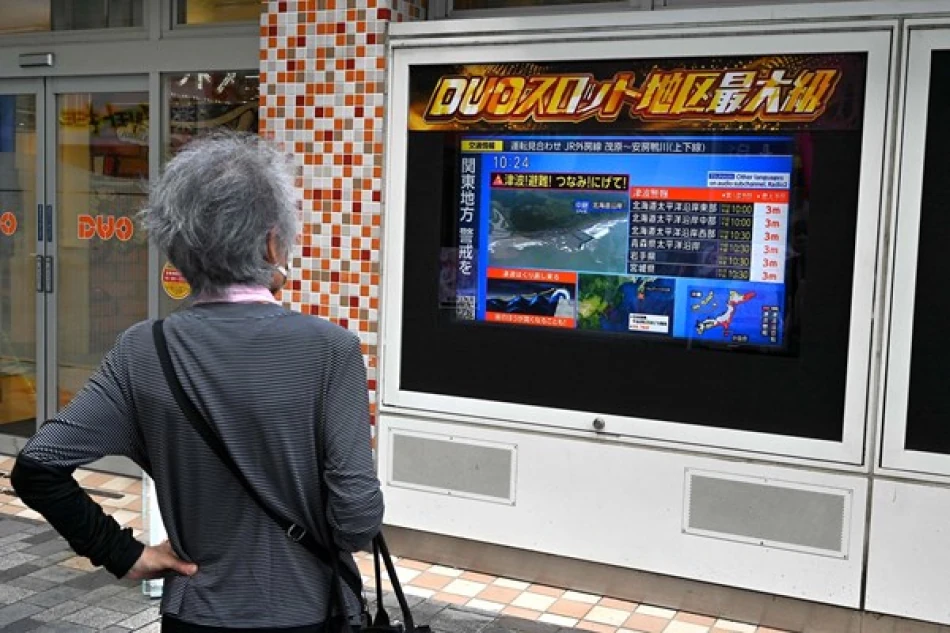
Powerful Aftershocks Rock Kamchatka After Devastating Earthquake
Japan Braces for 3-Meter Tsunami Waves After Major Kamchatka Earthquake Triggers Fukushima Evacuation
A powerful earthquake that struck Russia's Kamchatka Peninsula has prompted Japan to issue its most serious tsunami warning in years, with authorities predicting waves up to three meters high could hit much of the country's Pacific coastline. The threat forced an immediate evacuation of the Fukushima nuclear plant—the same facility that suffered a catastrophic meltdown following the 2011 tsunami disaster.
Seismic Activity Continues in Russia's Far East
The Russian Academy of Sciences' Geophysics Institute reported that 30 additional tremors have been recorded following the main earthquake that struck the Kamchatka Peninsula on Wednesday. These aftershocks ranged in magnitude from 2.0 to 5.0 on the Richter scale, indicating continued instability in the region's tectonic plates.
Kamchatka Peninsula, located in Russia's far eastern region, sits along the volatile "Ring of Fire"—a horseshoe-shaped zone around the Pacific Ocean known for frequent seismic and volcanic activity. The area's geological instability makes it a regular source of earthquakes that can trigger tsunamis across the Pacific basin.
Japan's Swift Emergency Response
Nationwide Tsunami Alerts Activated
Japan's Meteorological Agency moved quickly to raise tsunami warnings across the nation's Pacific-facing coastlines. Warning sirens echoed through coastal towns as authorities urged residents to immediately seek higher ground—a response honed through decades of tsunami preparedness following devastating historical events.
Television footage from Japan's national broadcaster showed dozens of people on the northern island of Hokkaido gathering on a building rooftop, taking shelter under sun umbrellas as they waited for the all-clear. The images underscored Japan's well-practiced emergency protocols, developed after the country's painful experience with the 2011 Tohoku earthquake and tsunami.
Fukushima Nuclear Plant Evacuation
Tokyo Electric Power Company (TEPCO) confirmed that workers were evacuated from the Fukushima nuclear facility as a precautionary measure. This decision carries particular weight given the plant's history—the 2011 tsunami caused a nuclear meltdown that became one of the worst nuclear disasters in history, releasing radioactive materials and forcing the evacuation of surrounding areas.
The swift evacuation demonstrates how the 2011 disaster fundamentally changed Japan's approach to nuclear safety protocols. Any tsunami threat now triggers immediate precautionary measures at nuclear facilities, reflecting lessons learned from the previous catastrophe that caught authorities unprepared.
Economic and Strategic Implications
Fishing boats quickly departed harbors along Japan's coast to avoid potential damage from incoming waves—a standard practice that minimizes economic losses while protecting valuable maritime assets. This coordinated response reflects Japan's sophisticated disaster management systems, which have evolved to balance human safety with economic considerations.
Japan's rapid response capabilities have become a model for other Pacific Rim nations facing similar tsunami risks. Countries like Chile, Indonesia, and the Philippines have studied Japan's warning systems and evacuation procedures to improve their own disaster preparedness.
No Immediate Casualties Reported
Japanese Chief Cabinet Secretary Yoshimasa Hayashi confirmed that no injuries or damage had been reported as of the initial assessment. Crucially, he noted that none of Japan's nuclear power plants experienced disruptions, suggesting that the country's enhanced safety measures implemented after 2011 are functioning as designed.
This incident serves as both a test of Japan's improved disaster response systems and a reminder of the ongoing seismic threats facing the Pacific region. The country's ability to mobilize quickly while maintaining nuclear safety protocols demonstrates significant progress since the 2011 disaster, though the ultimate effectiveness will depend on the actual impact of any tsunami waves that reach Japanese shores.
Most Viewed News

 Layla Al Mansoori
Layla Al Mansoori






